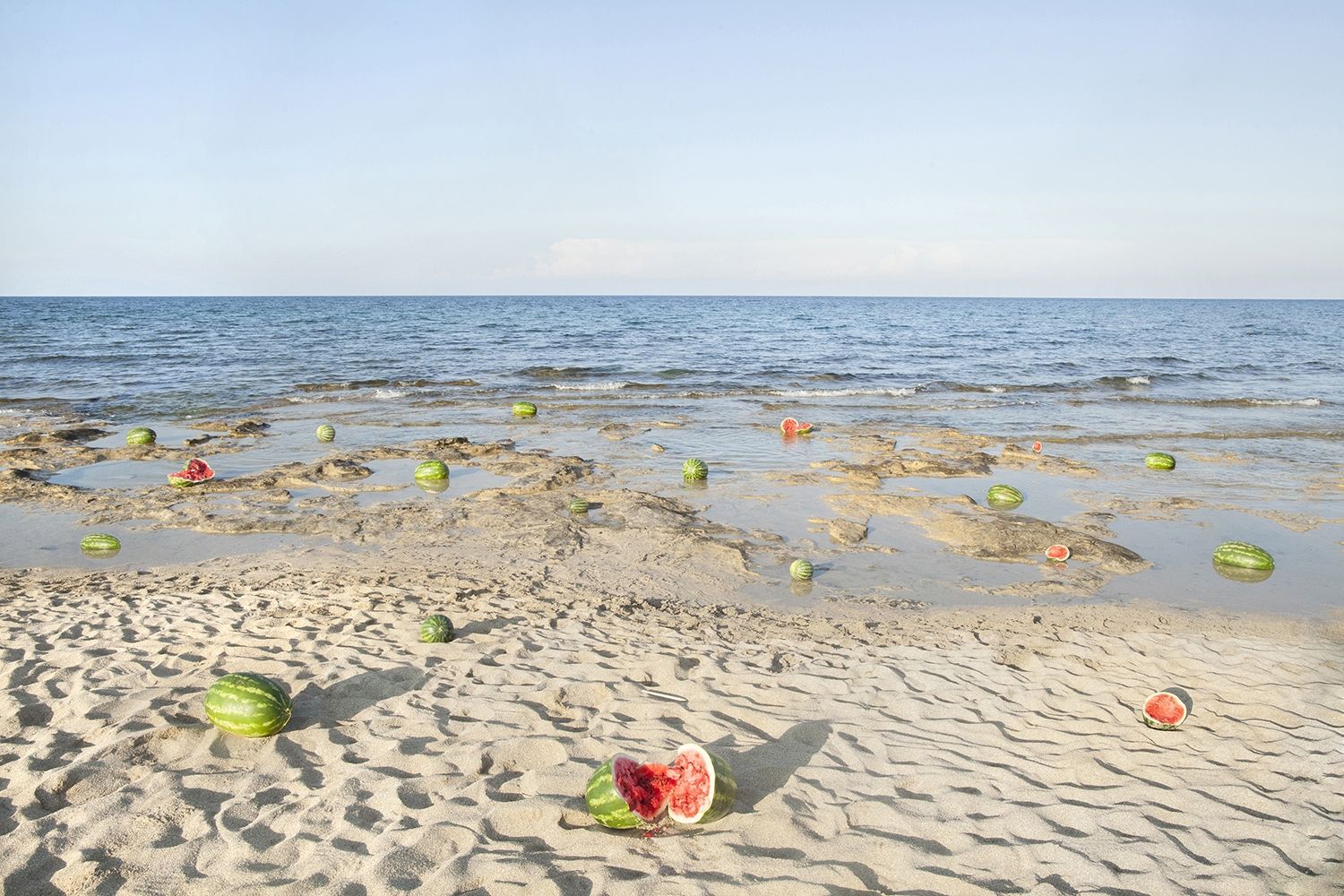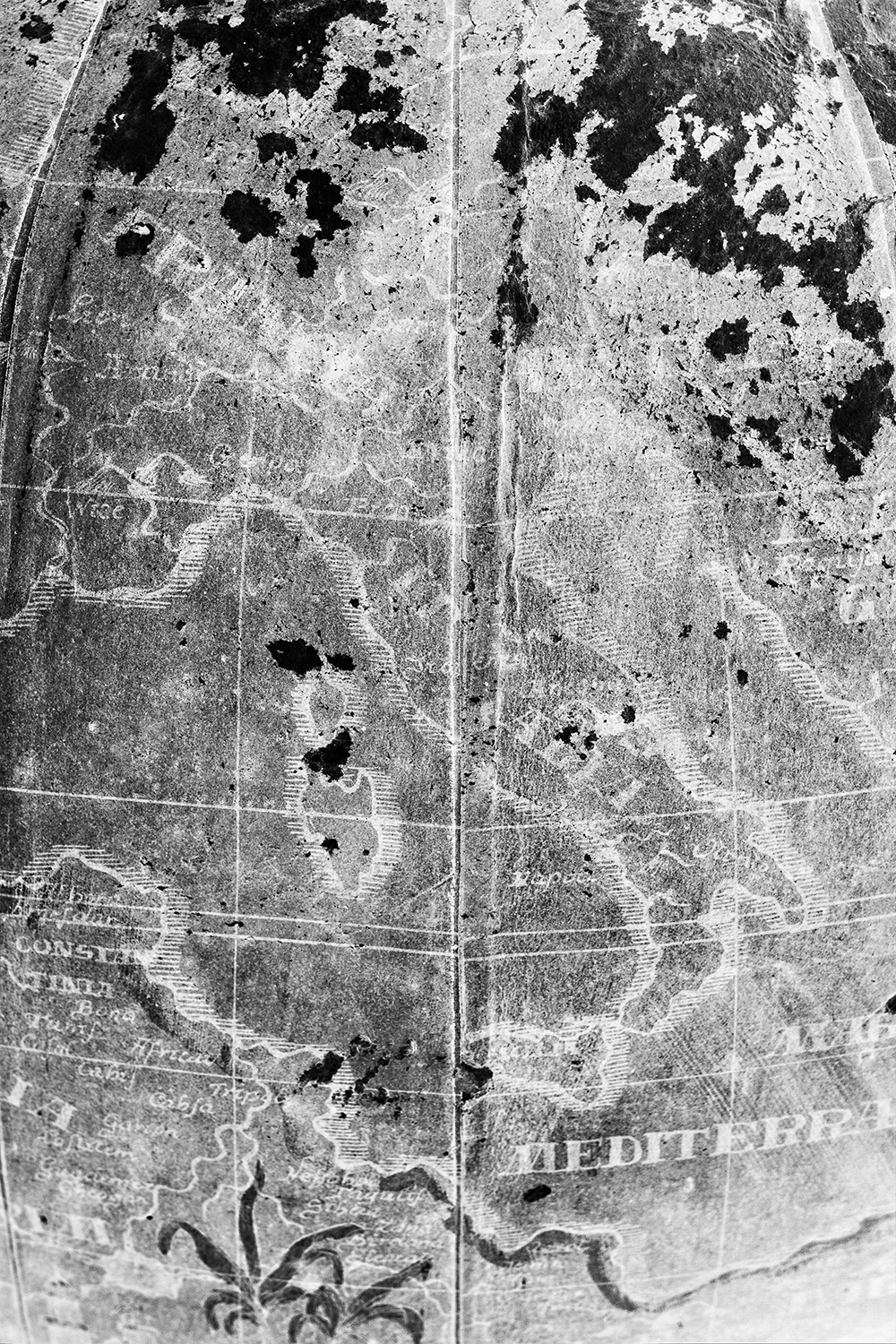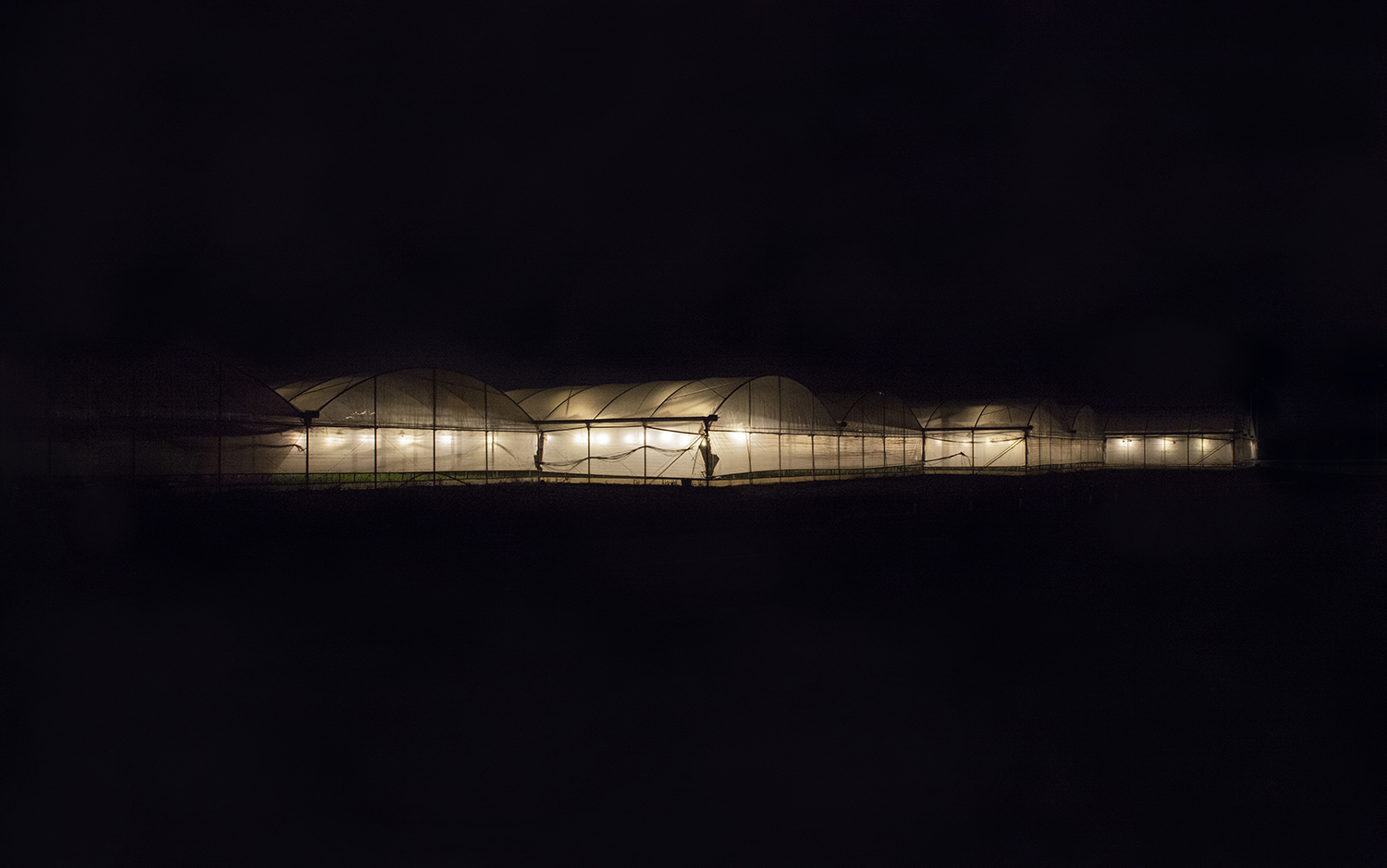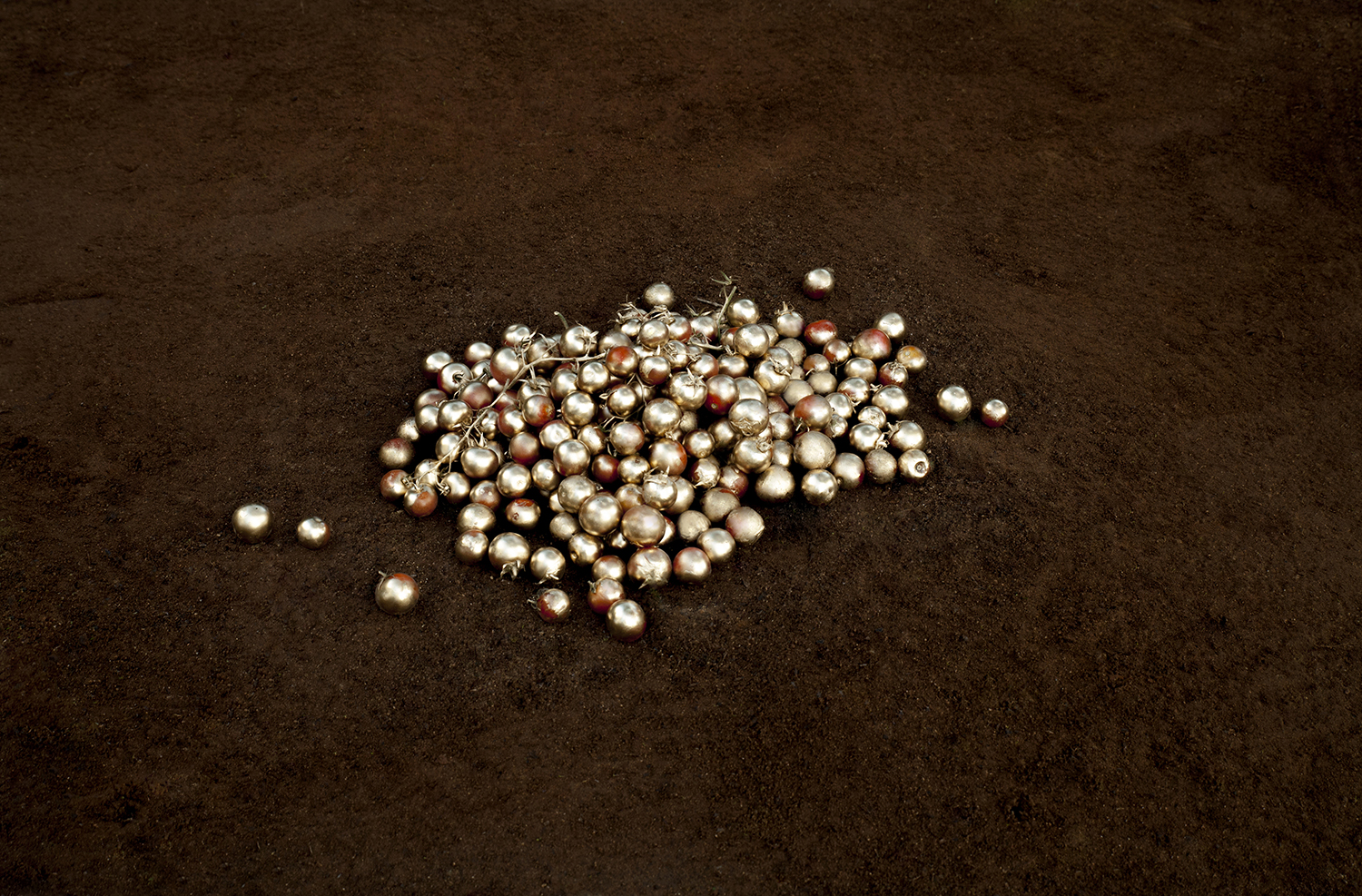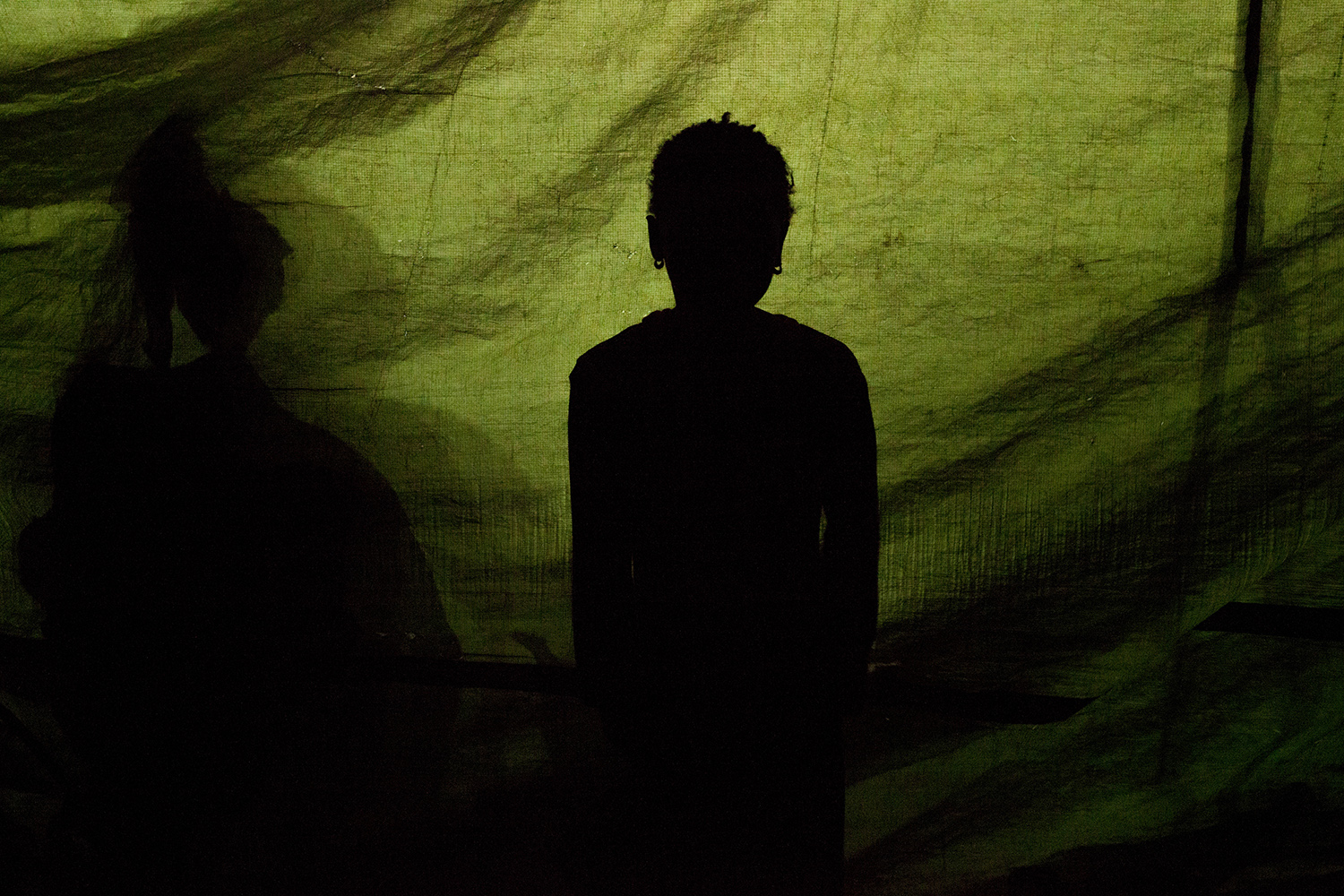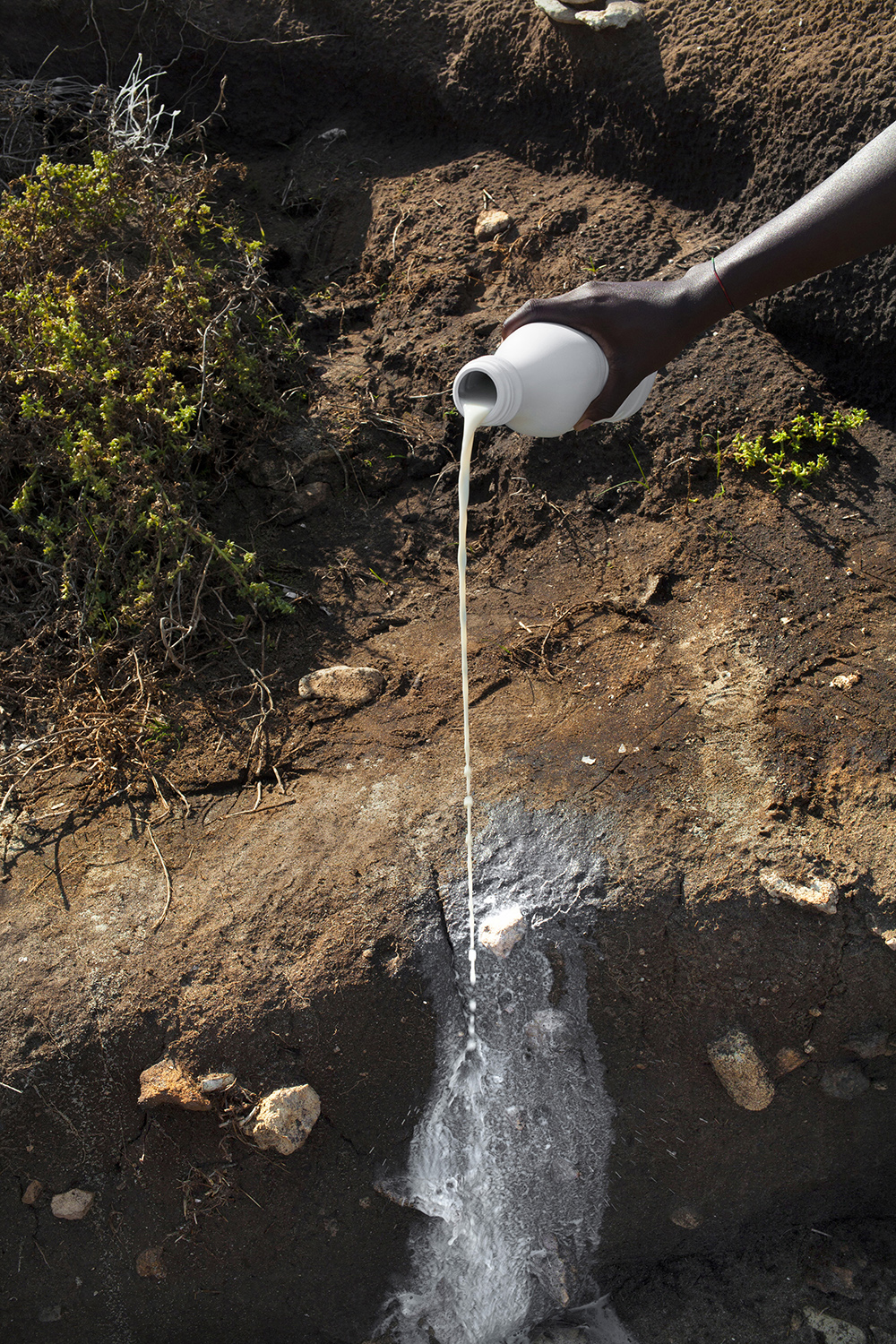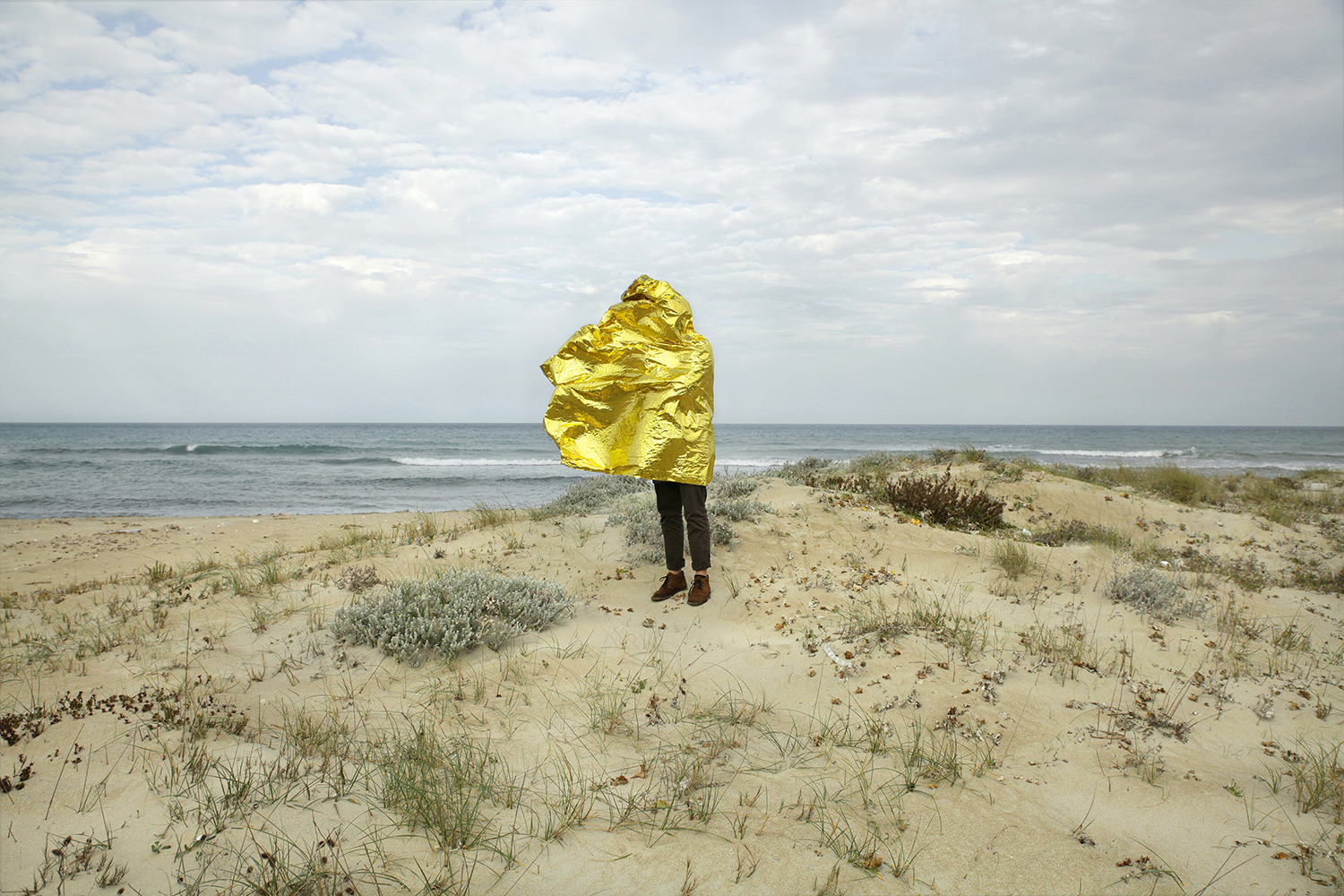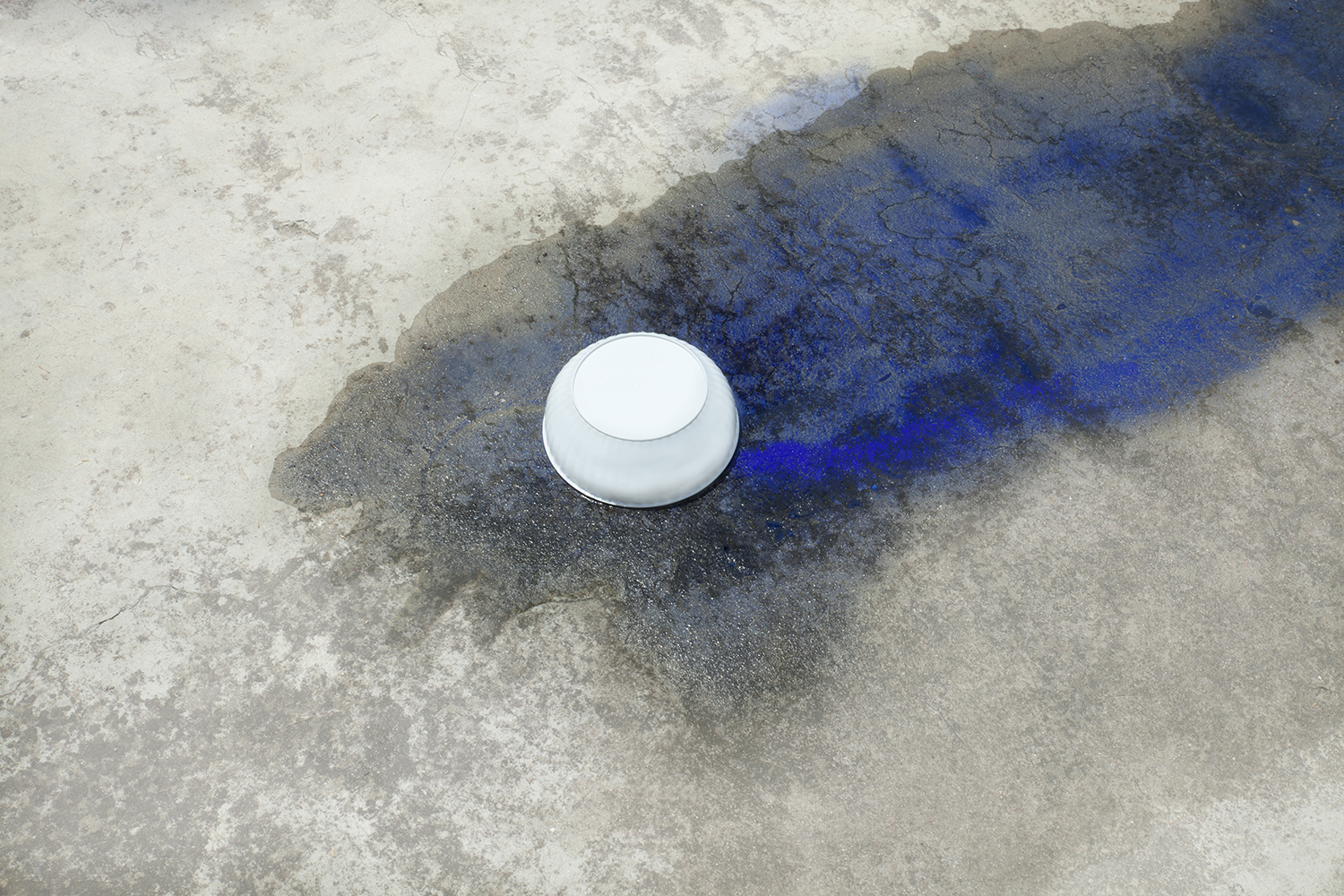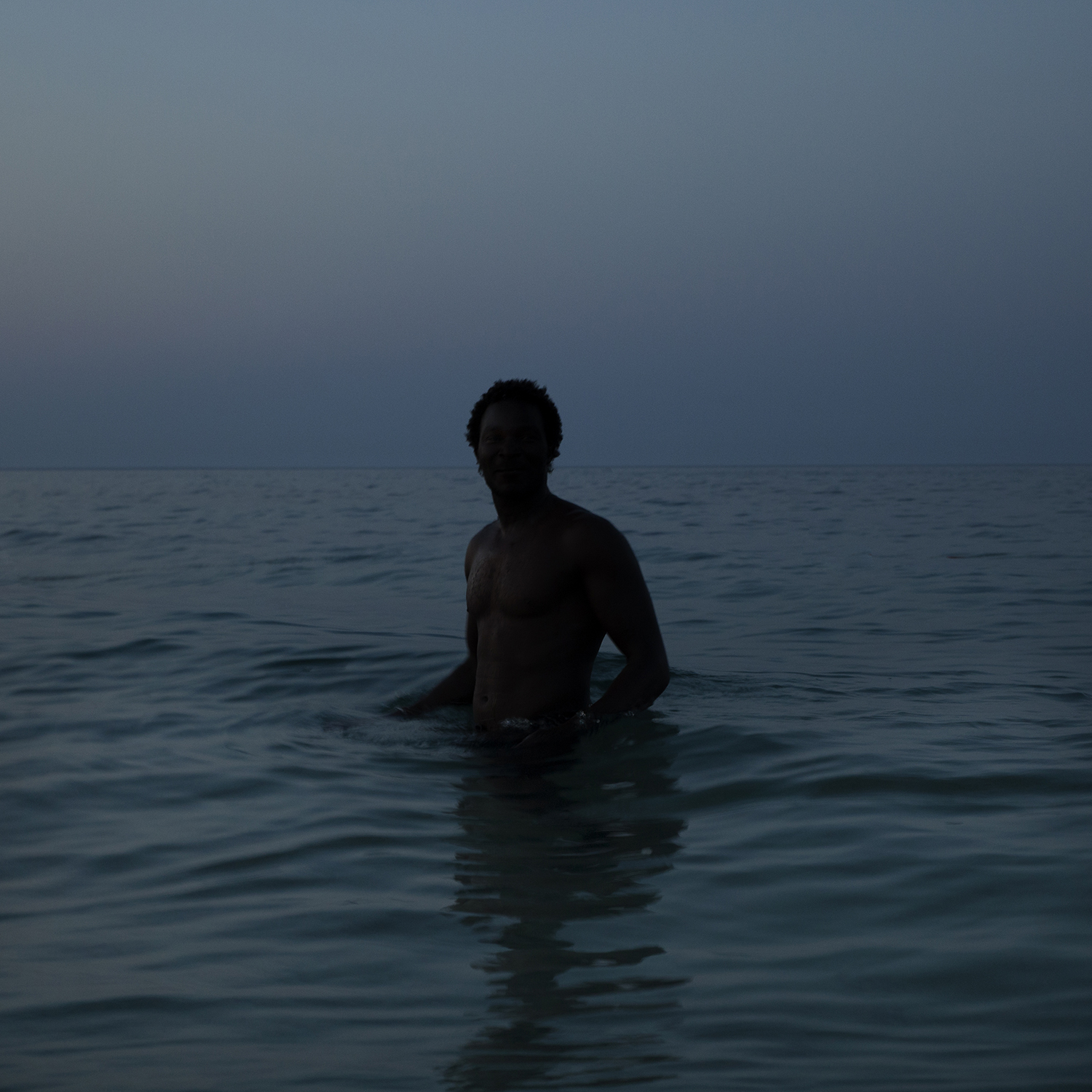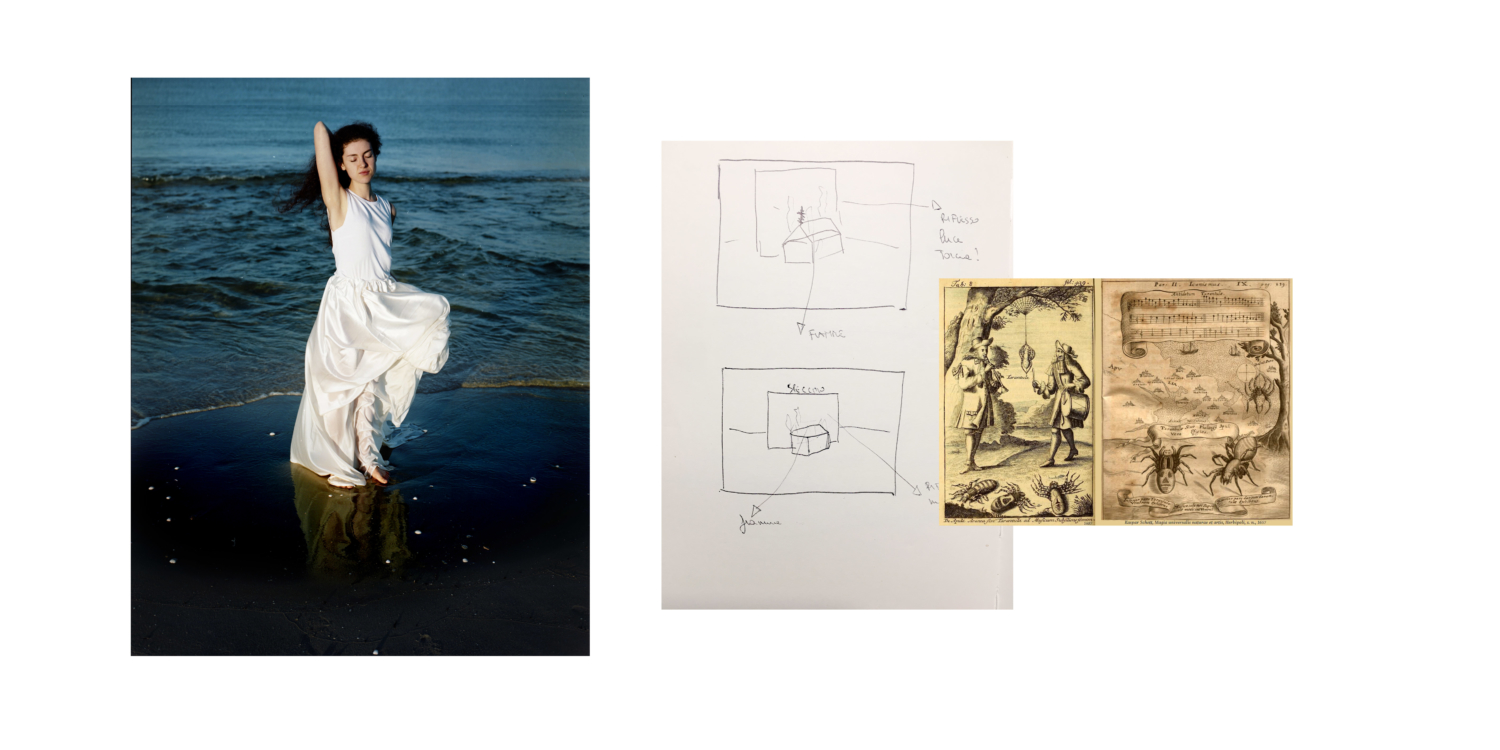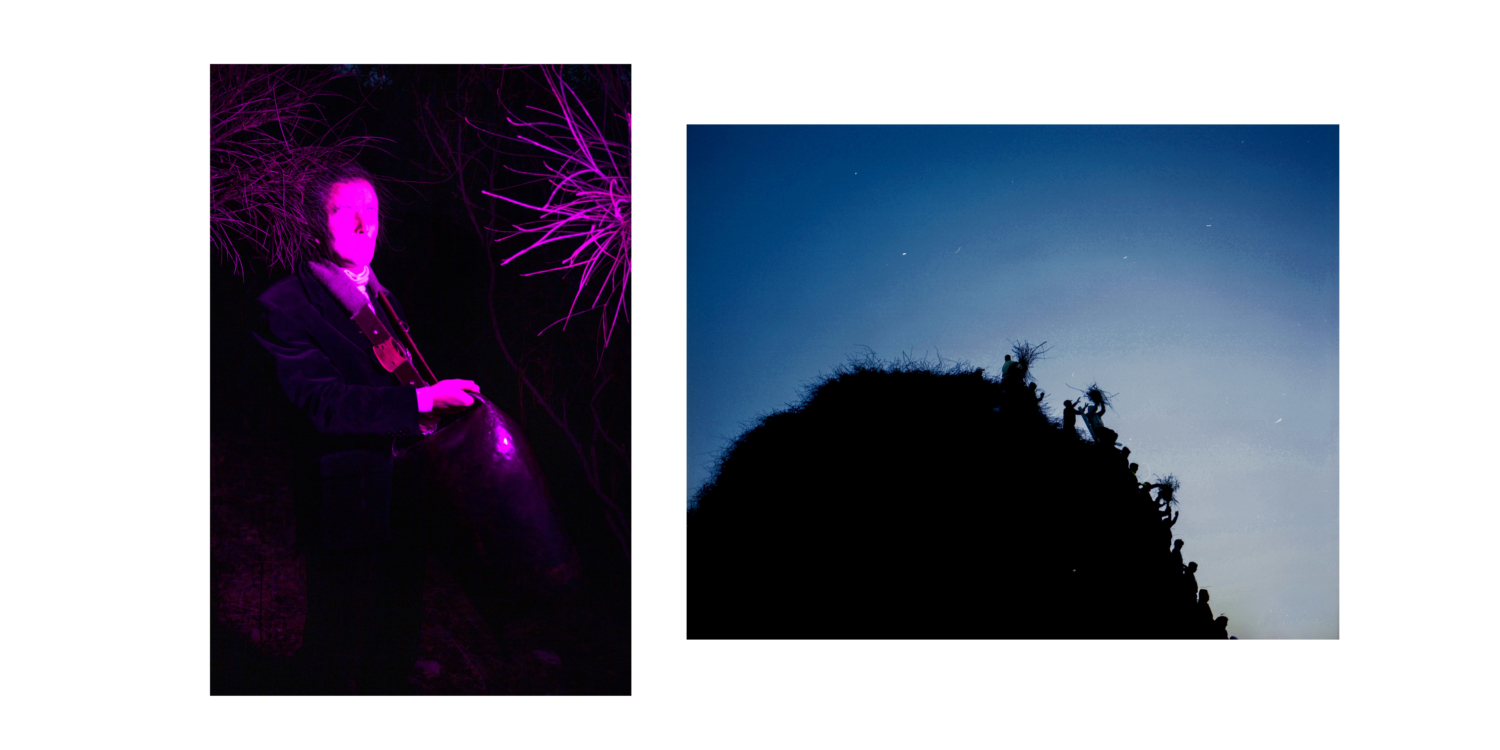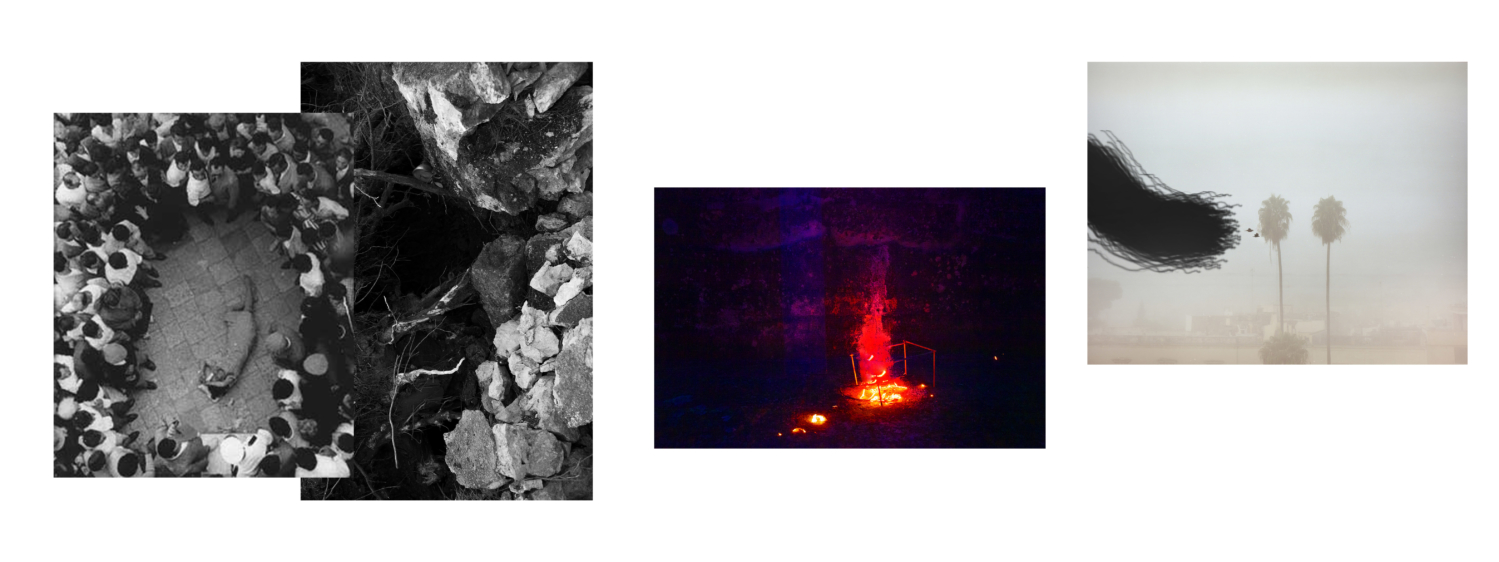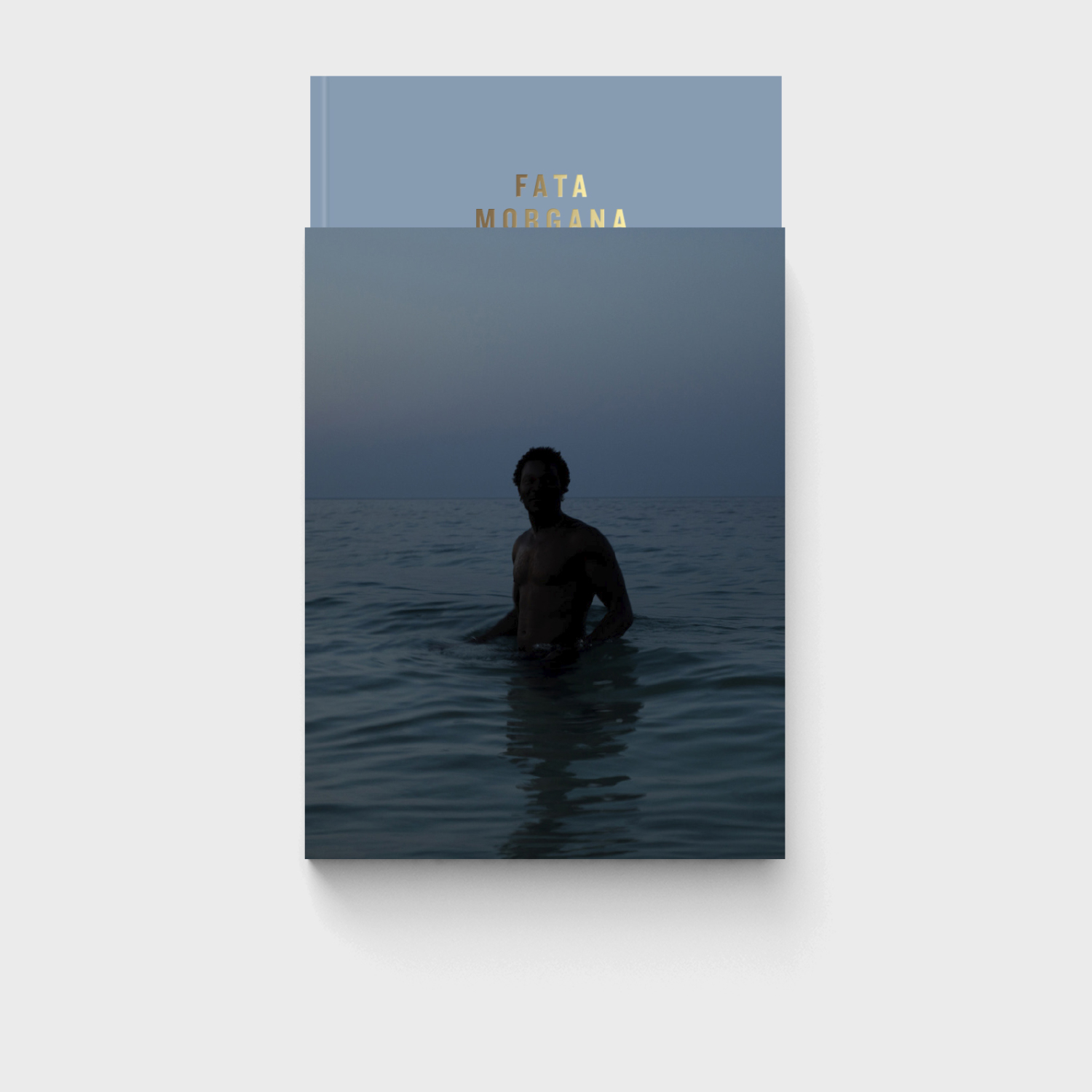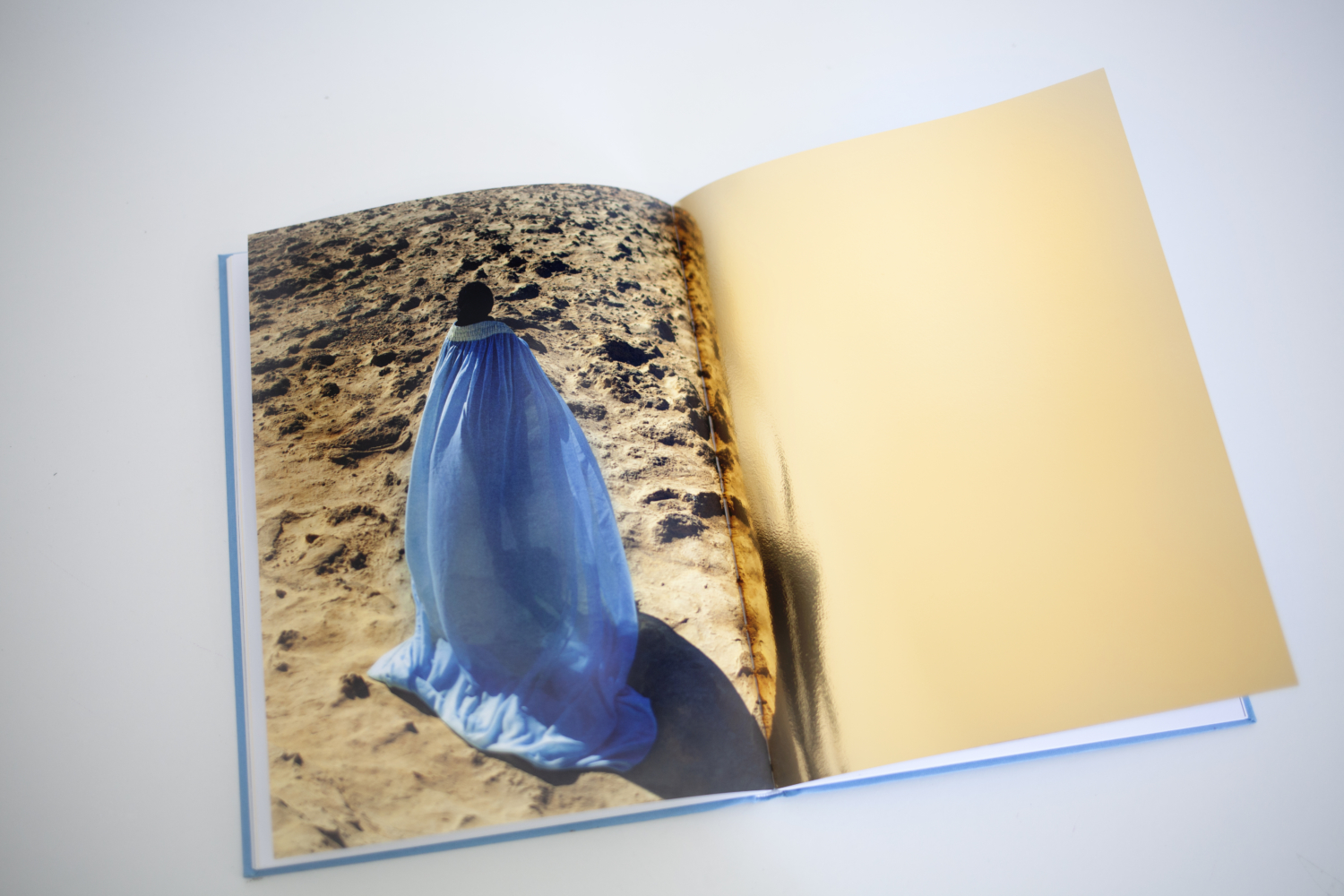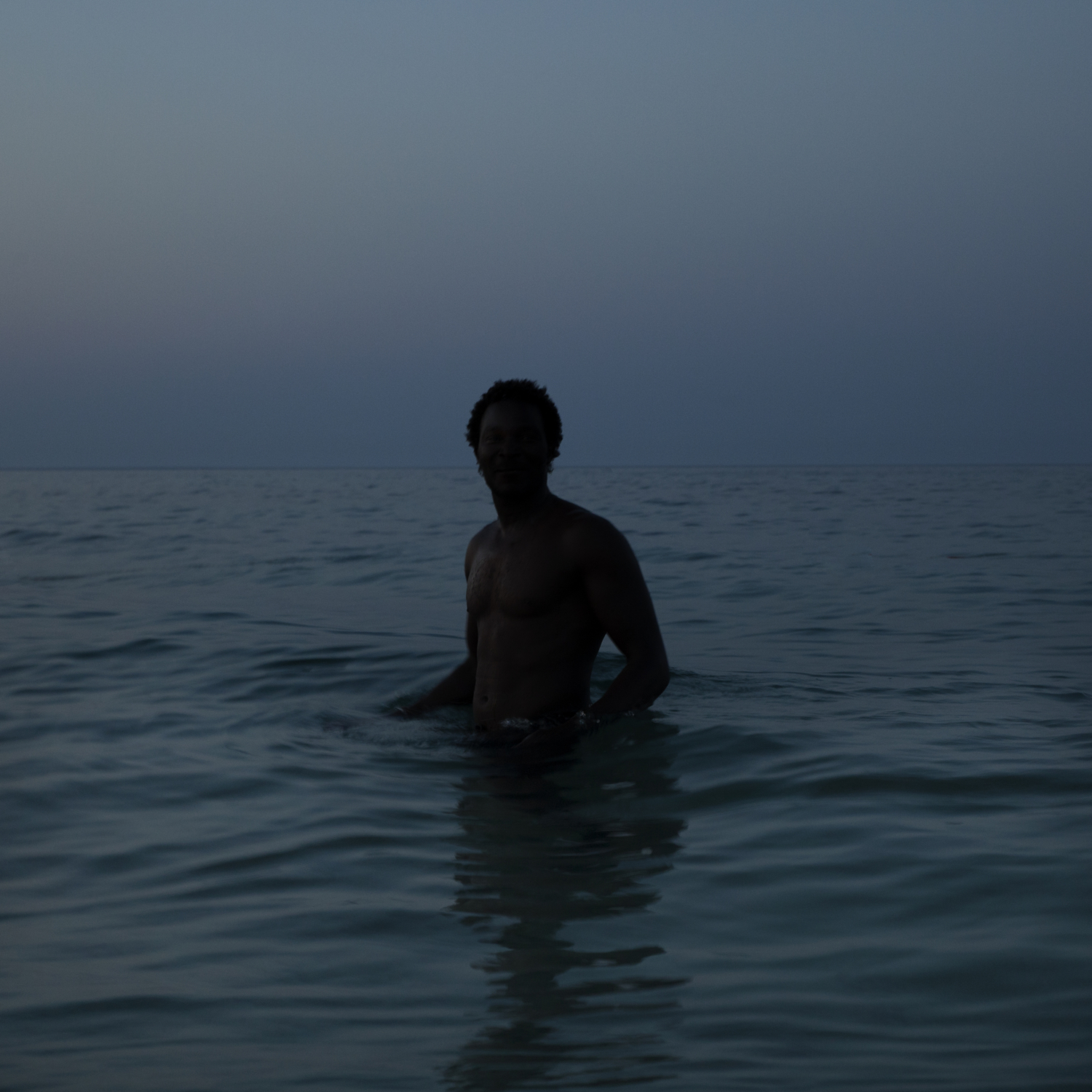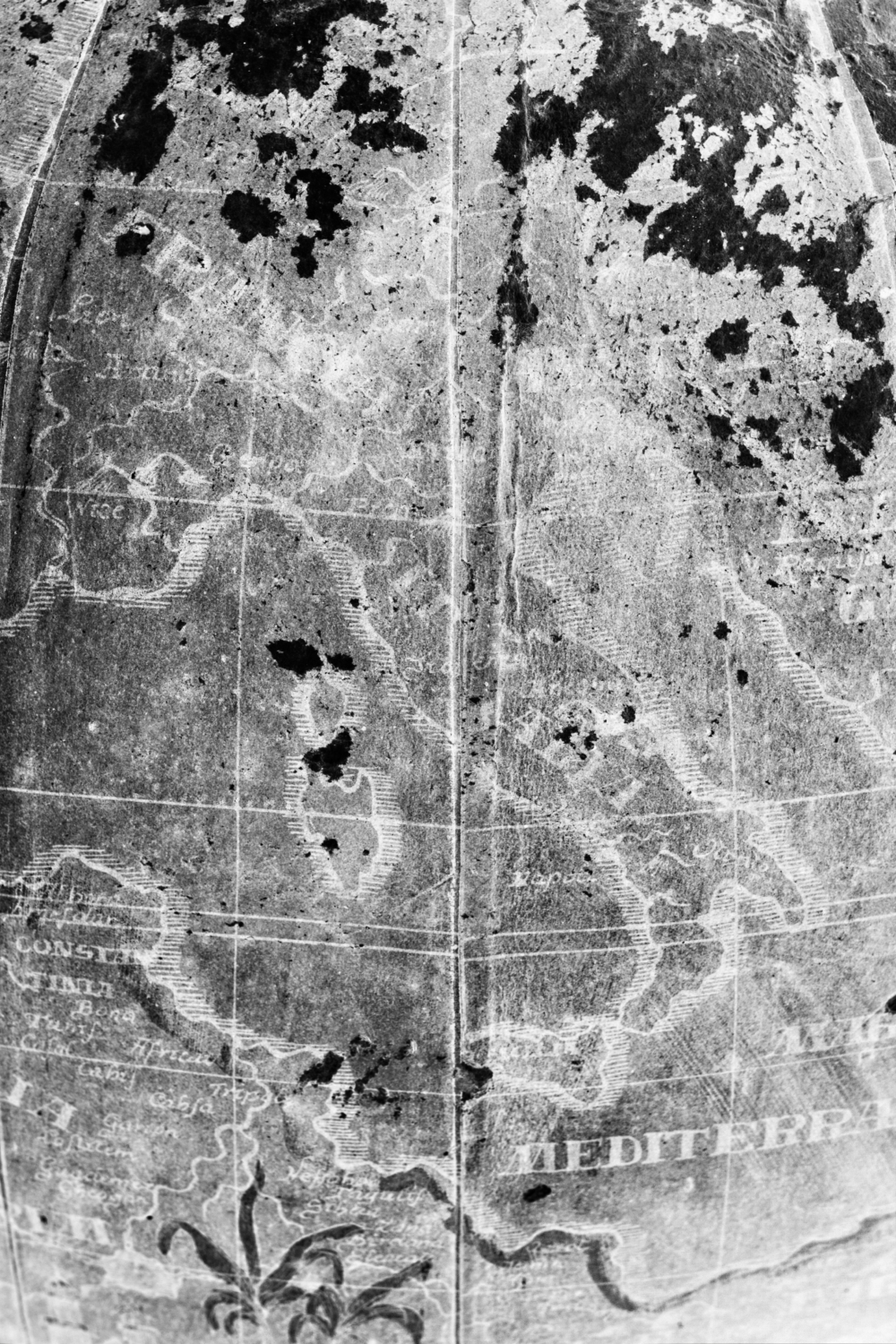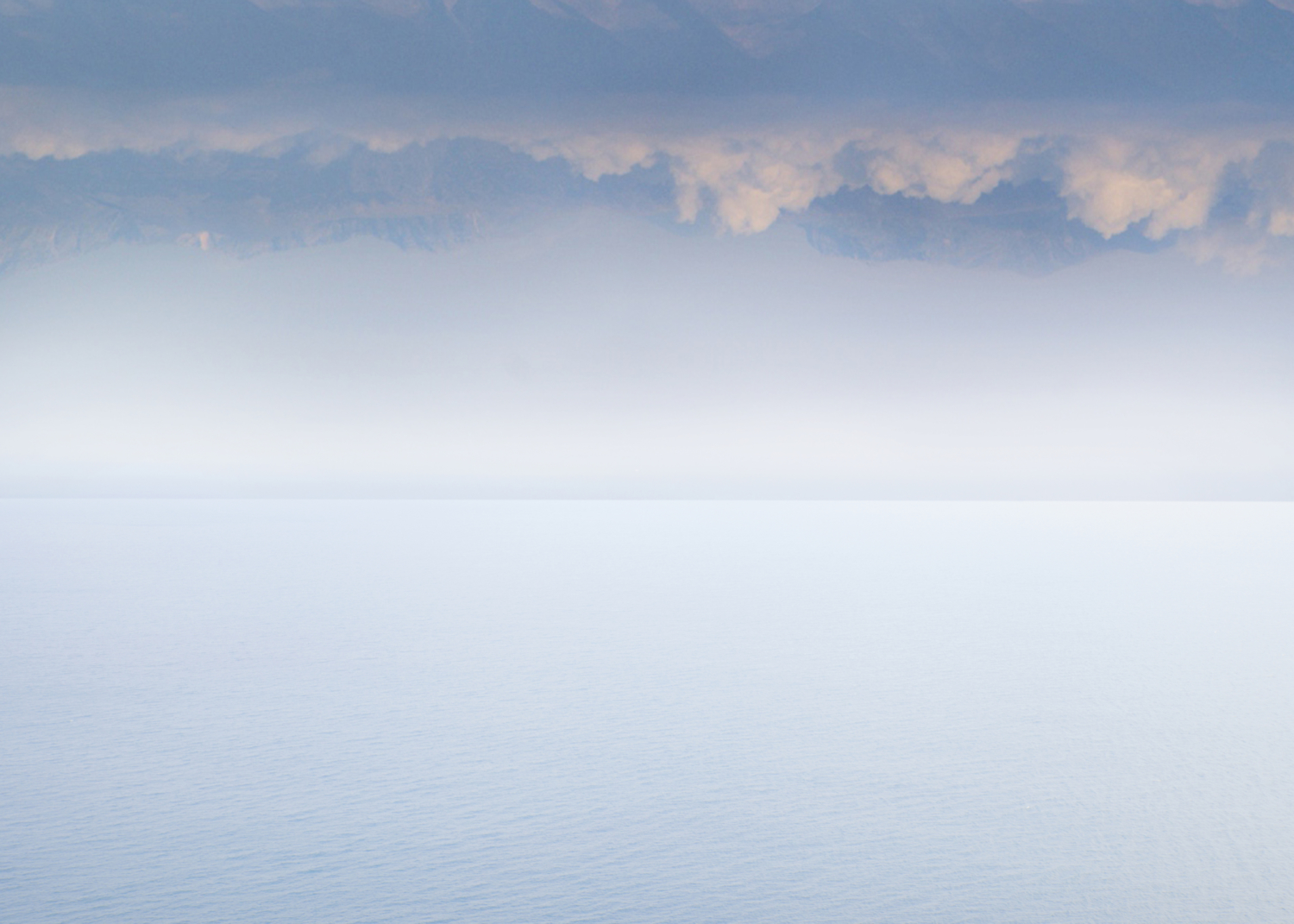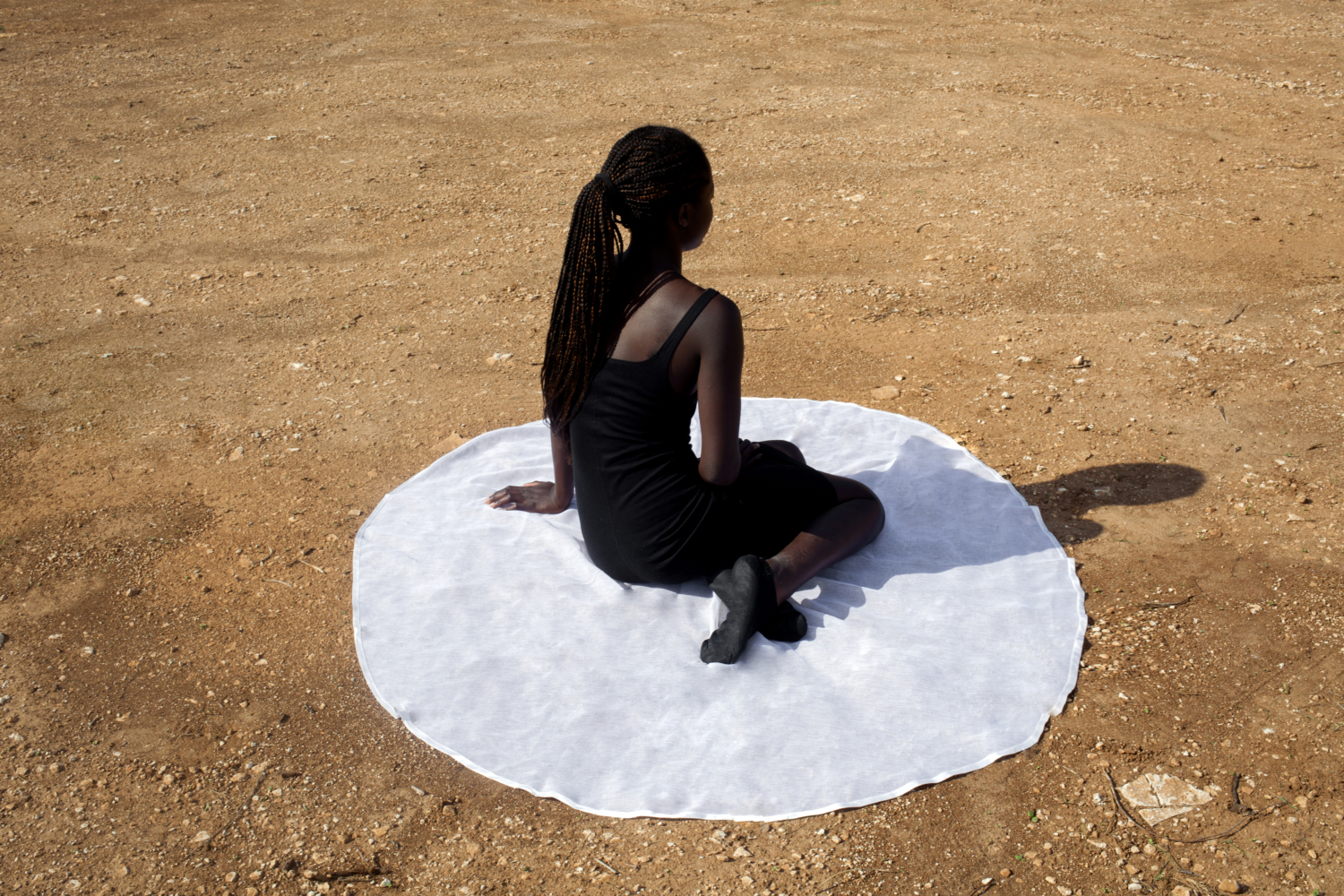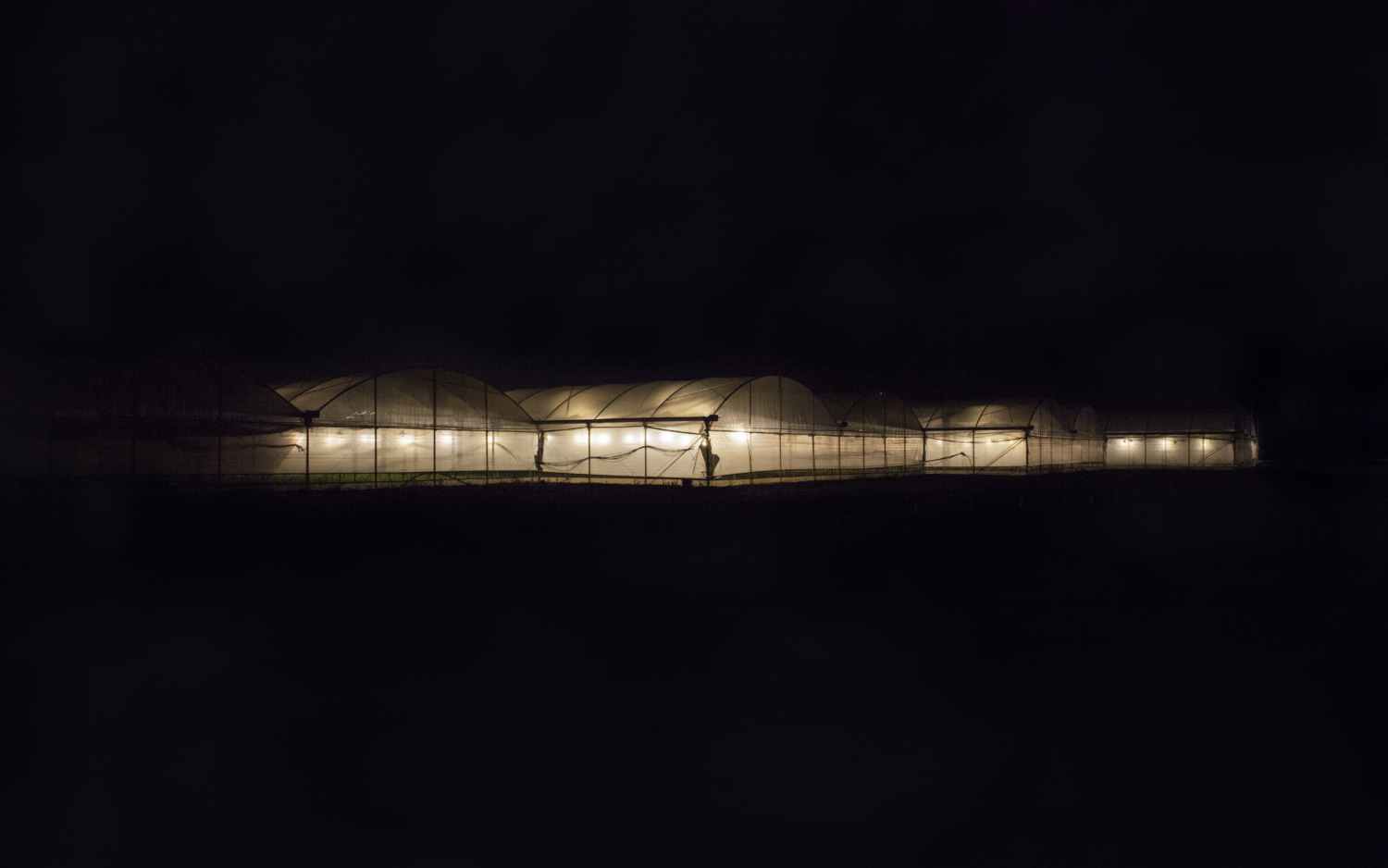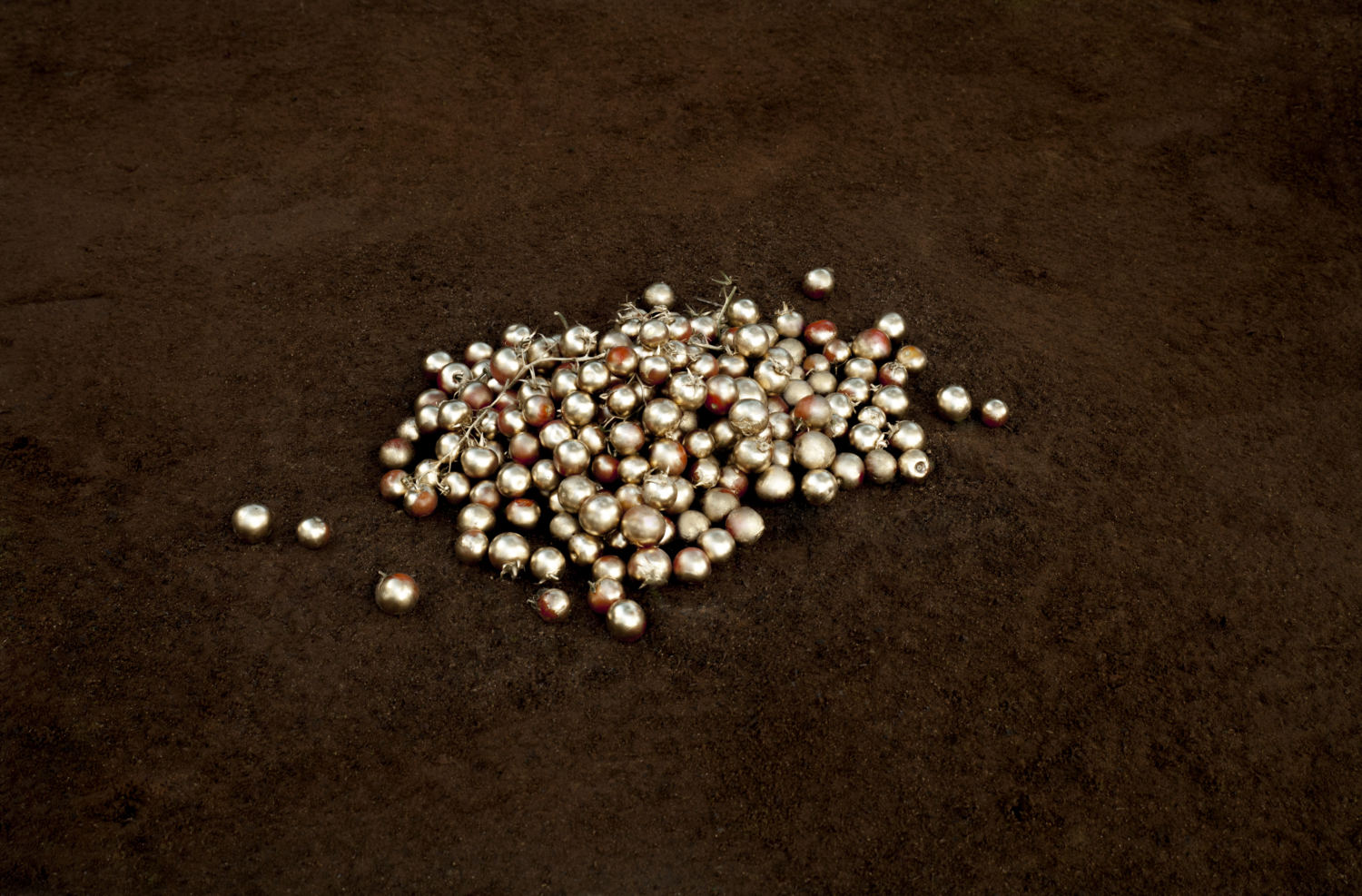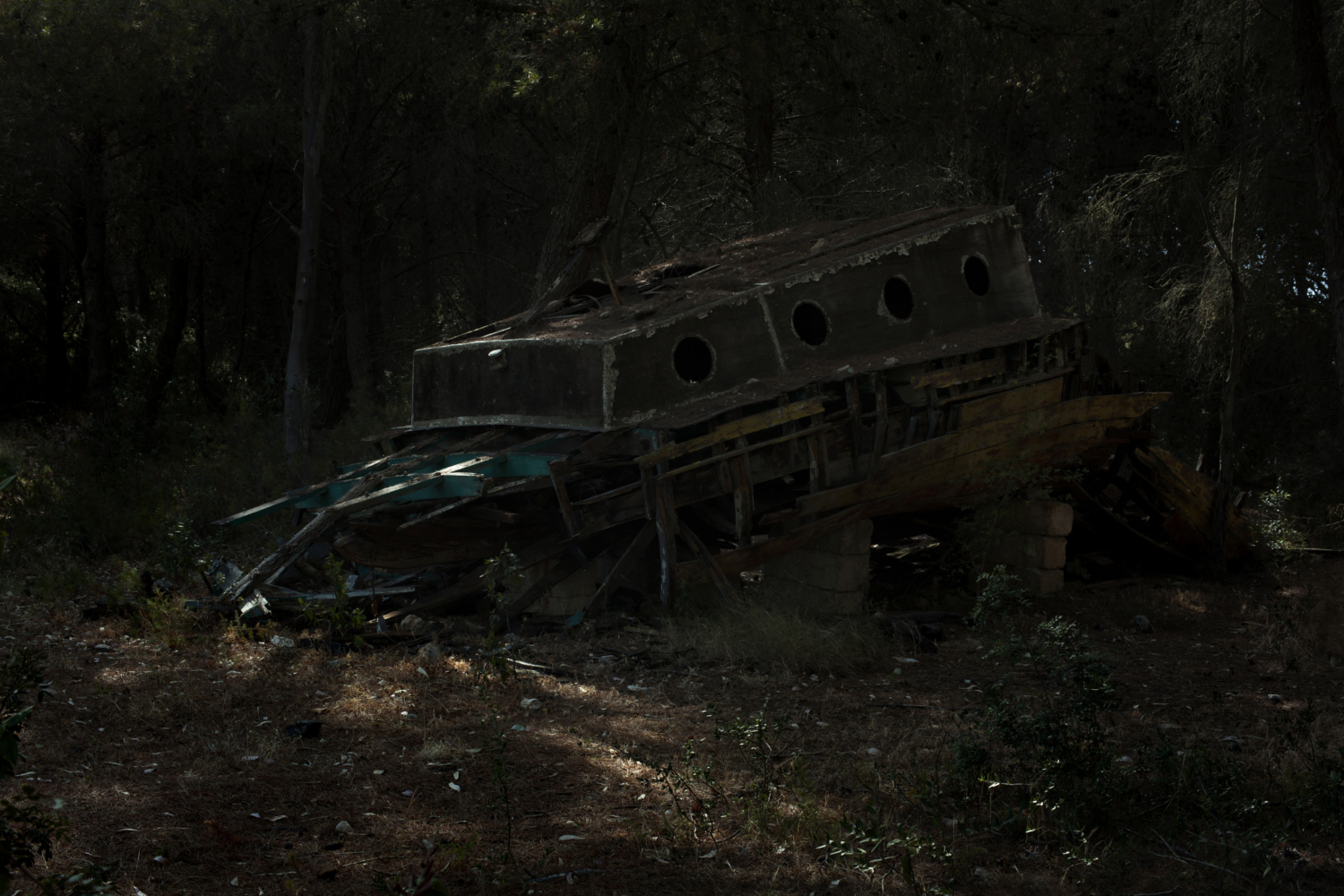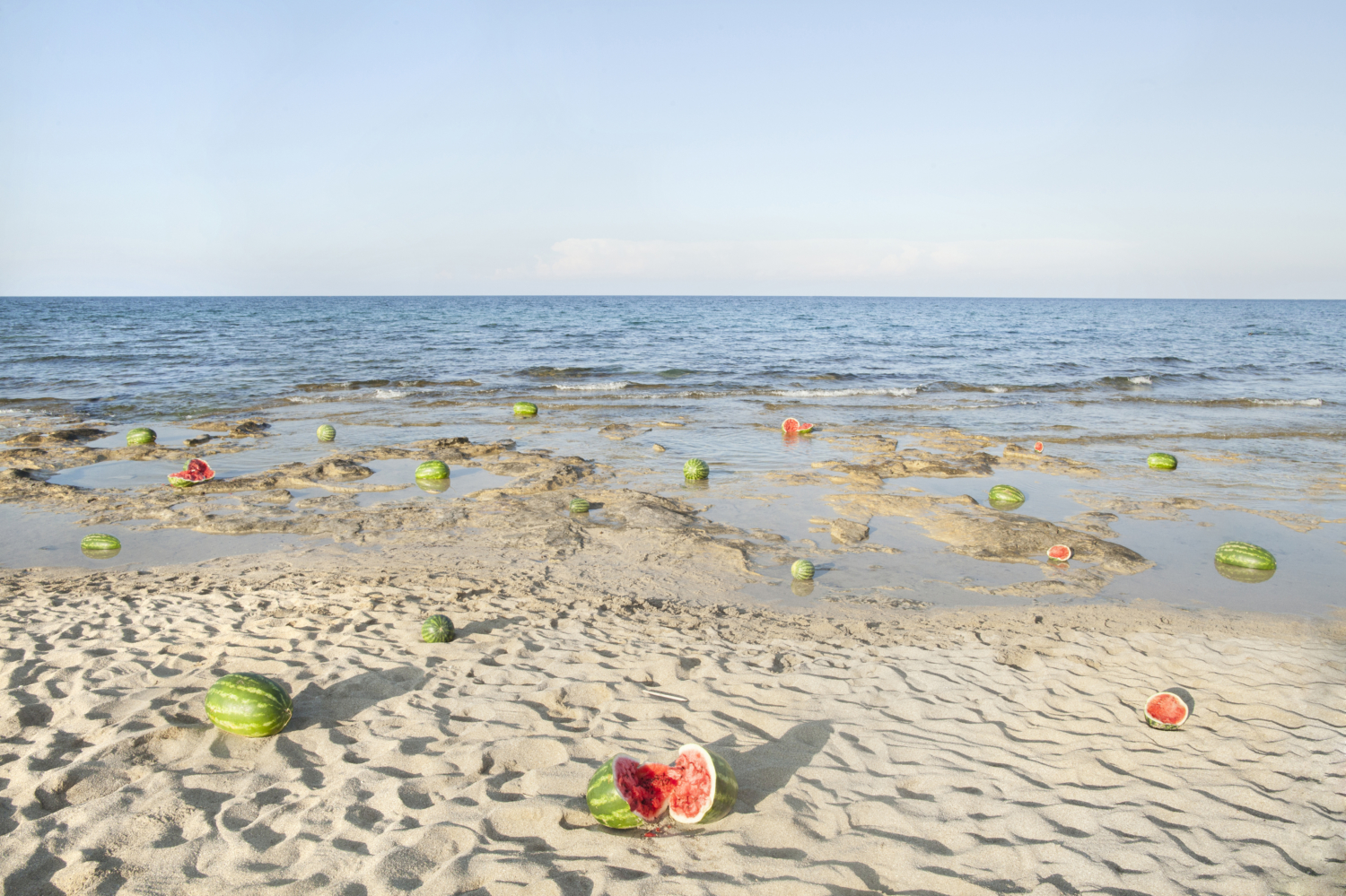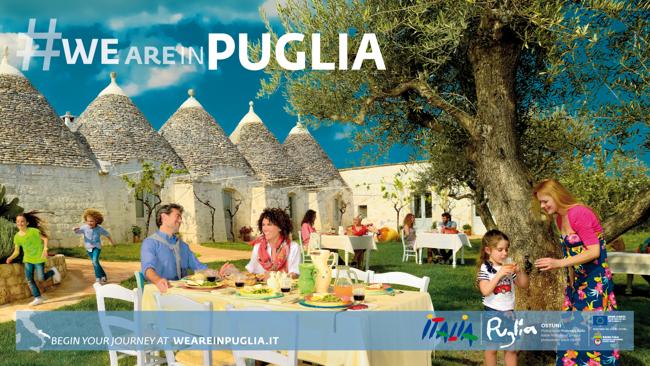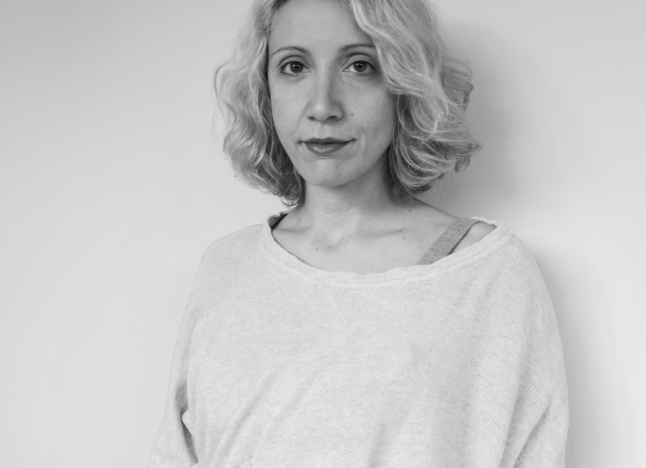Ana Zibelnik
Artist Feature
Every week an artist is featured whose single image was published by Der Greif. The Feature shows the image in the original context of the series.
Alessia Rollo - Fata Morgana
Apr 01, 2020
I think surrealism plays an important role in my work not because I feel me especially connected with this historical art scene but because I grow up in a place where fiction and reality constantly mix it up.
I always mix up really different photographic languages (as stage photography, landscape, reportage and still life) because I believe there is not a real point of view in the storytelling of reality and I want to make it clean in my practice through the fragmentation of the vision: I believe the spectator needs to have an active role to complete my work.
Starting from 2015 to 2018 I’ve been working on a project called Fata Morgana, a complex mirage that distorts objects and then fades very quickly. This phenomenon is visible from my region in the southern part of Italy, Salento and it represents for me a powerful metaphor of our contemporary geopolitical situation.
Artist Blog
The blog of Der Greif is written entirely by the artists who have been invited to doing an Artist-Feature. Every week, we have a different author.
Published in:
»Guest-Room Sara Hemming«
Alessia Rollo 5
Apr 08, 2020 - Alessia Rollo
After Fata Morgana I asked myself many times which kind of topic were relevant for me in photography. I wondered what kind of stories and which point of view to adopt.
While a was studying for a university exam one year ago I discovered that in the book of Italian history of photography were no women from South Italy mentioned. I started to be curious about who and how created an imaginary about south Italy: male photographers from North Italy. Researching and studying the historical moment were South Italy became relevant for literature, researchers, filmmakers and photographers I discovered that it was in the time neorealism was the dominant trend: cinema felt the mission to document the “true life” and photography to use the ethnographic approach to study, catalogue and archive rituals, habits and people that were living far away from capitalism and modernization.
Through this lens, South Italy appears in the movies and in the photographic archive as “primitive, underdeveloped and archaic”: a kind of exotic place where women still follow old pagan ritual and men were in contact with the land in a holistic and organic way.
I was very surprised how a capitalistic way of thinking totally flattens the reality and I was wondering how to give another storytelling to the history, the rituals, the landscapes of the place I belong.
So, I decide to start this new project, which has no name yet, but it’s on a research level: I’m including a lot of archive material produced during the ’50 y researcher, anthropologist, photographers and video maker and I’m especially interested in the role and representation of south Italian women.
Alessia Rollo 4
Apr 06, 2020 - Alessia Rollo
In 2018 Fata Morgana become a book.
I got an award by Madrid Cultural Department for the project and I worked with the publisher house Ediciones Anomalas who made the editing and later with Underbau that design the book itself.
It was a great experience and I think the book was a common creation, a very different process from the one I followed for creating the project itself.
I’m very happy and grateful for the result: you can have a look at the book here:
Alessia Rollo 3
Apr 05, 2020 - Alessia Rollo
This project represents my willingness to create a visual complexity around these topics so relevant in the contemporary European scenario but as well to think about the role of photographers, which are powerful producers of meanings, ideas and opinions.
Fata Morgana includes portraits of foreign people who live and work in my region, descriptive and evocative pictures of some elements of the landscape, still life of symbol of the exploitation of seasonal workers and some metaphoric component as the mirage of Albanian Mountains.
This project is a storytelling in between reality and fiction in which the spectator is invited to recreate his own story, fill up the gaps and give the characters of the book the possibility to double themself and transform in someone else. The possibility of dreaming, which is a fundamental aspect of the existence of all human beings.
Alessia Rollo 2
Apr 03, 2020 - Alessia Rollo
I’ve started to work on Fata Morgana in 2015 because as photographer I was feeling deeply irritated by a picture that show the body of a Syrian baby boy on a beach in the failed aim to reach Europe.
So, I decided to set up other photos from my point of view and esthetic: for the very first picture I took I’ve used some watermelons to speak metaphorically about people who are fleeing their homes in search of a better life. It was an attempt to make people think about the content of the scene without explode the sufferance of human beings.
Alessia Rollo
Apr 02, 2020 - Alessia Rollo
I’m from South Italy, from a region called Apulia. Since I was a child I saw Albanian Mountains from the coast and I believed it. Later, I discovered it’s a mirage.
The first mediatic image I remember in my life is the arrival of Vlora ship at Bari harbour in 1991. About 20000 people were located on this ship. They had no names: they immediately were called “invaders” from the national press.
Many years later, when I become a photographer I observed that nothing was changed about the representation of migration. At the same time, I saw how different the representation was that my region was given of itself and of white, middle class people on a marketing campaign called #weareinpuglia.
Fata Morgana is the name of a complex mirage that distorts objects and then fades very quickly. Fata Morgana is visible from my region in the southern part of Italy, Salento, and it gives the illusion to see Albanian mountains from the Adriatic Sea: but to me, it represents a powerful metaphor of contemporary geopolitical situation.
Fata Morgana is the name of the project I started in 2015 to question about how media were representing migration and analyze the stereotypes about people, cultures and civilization.


